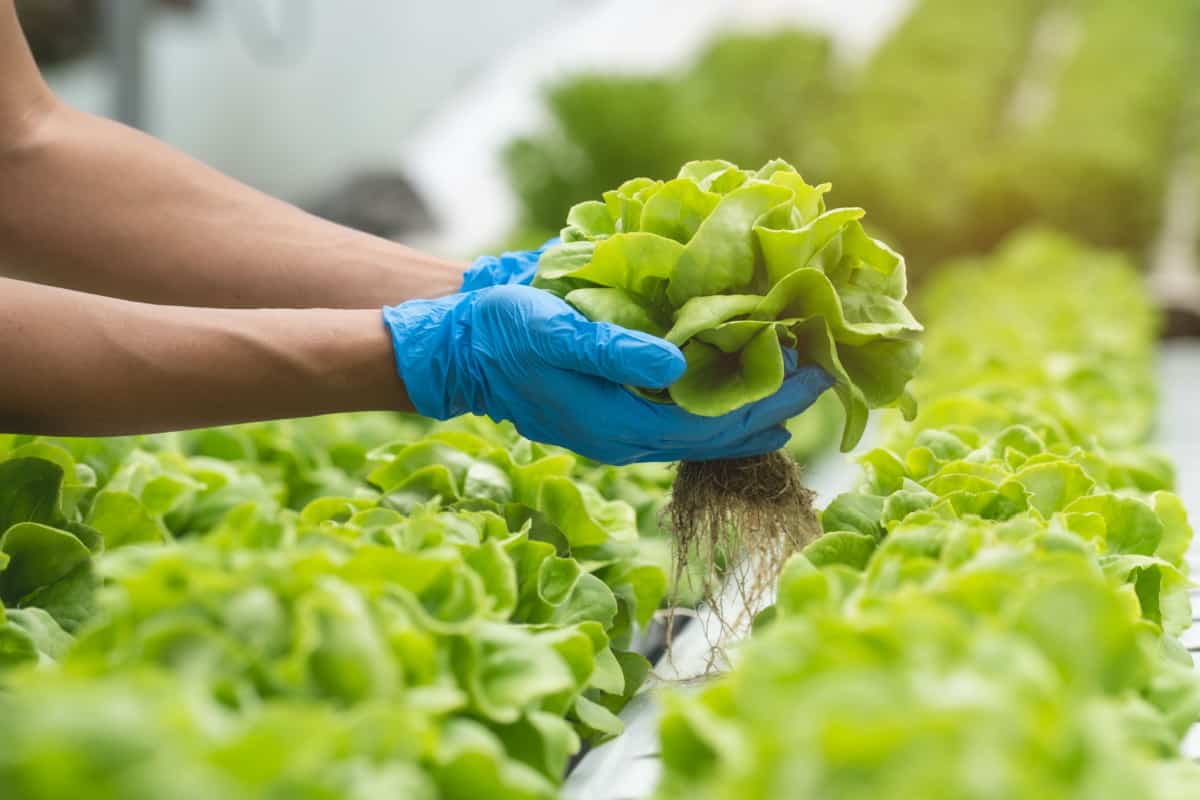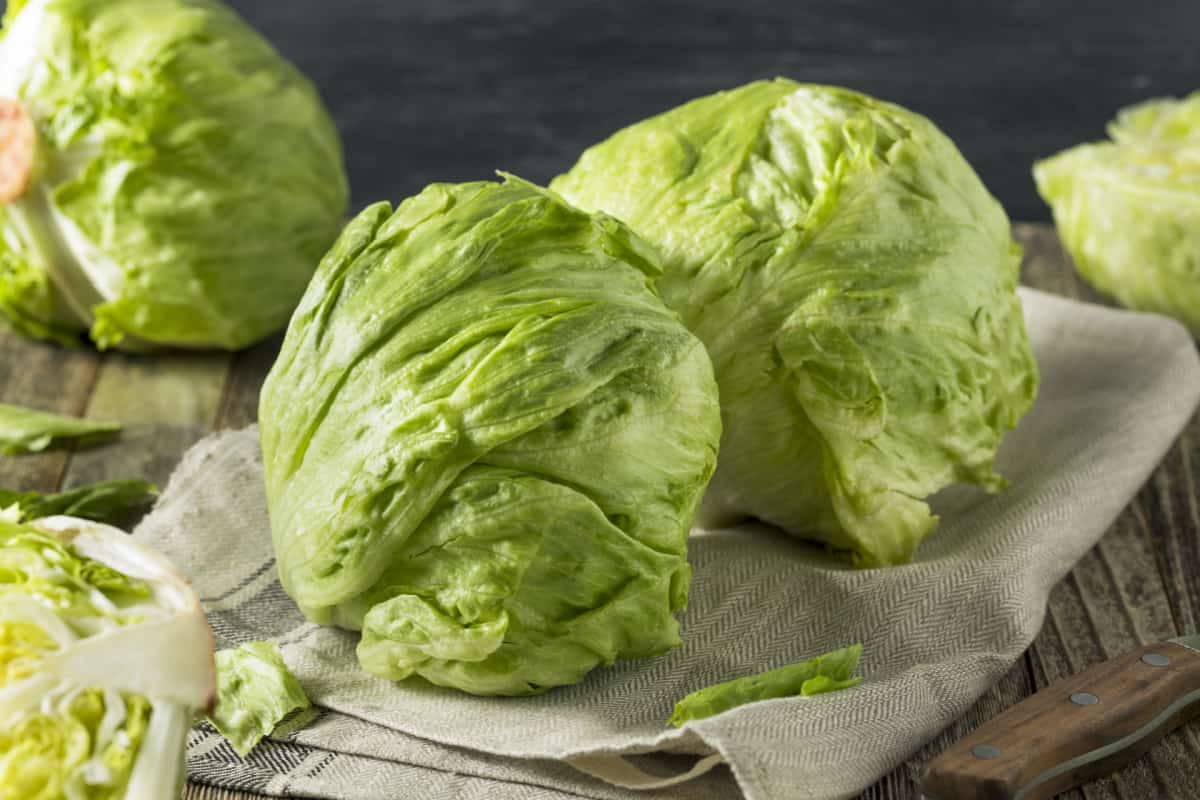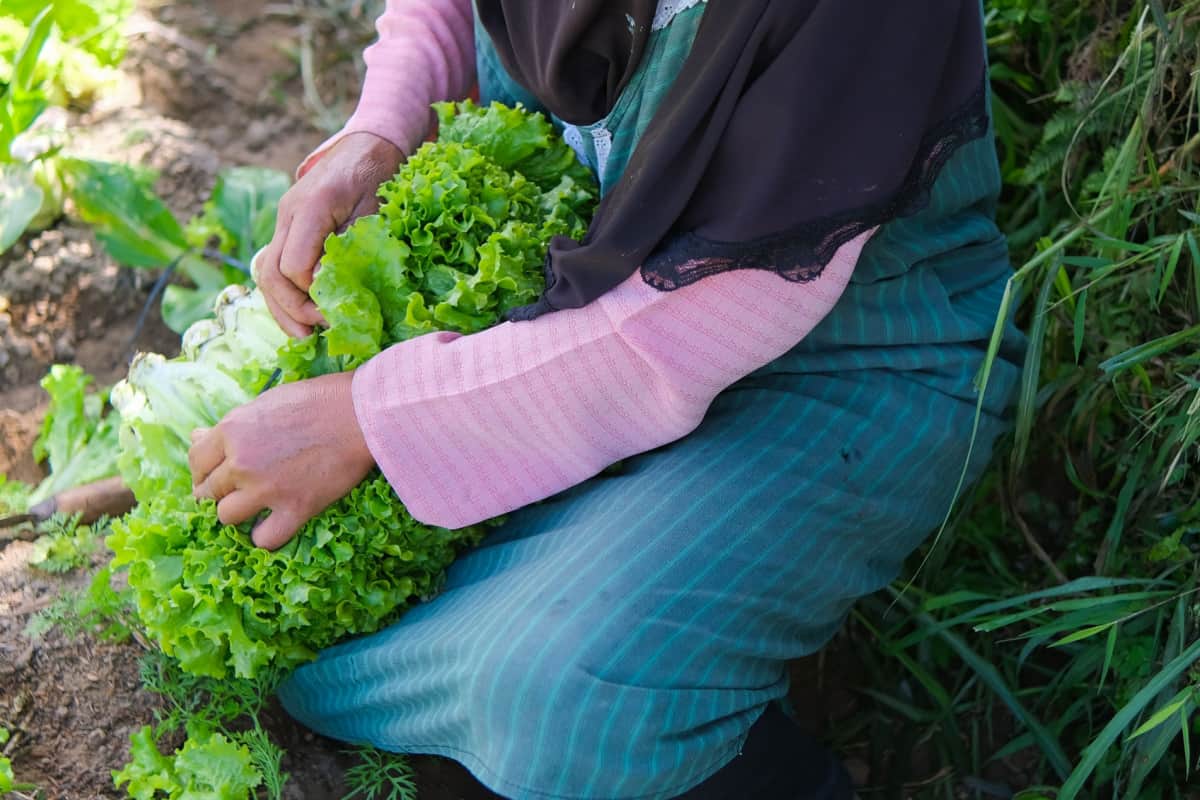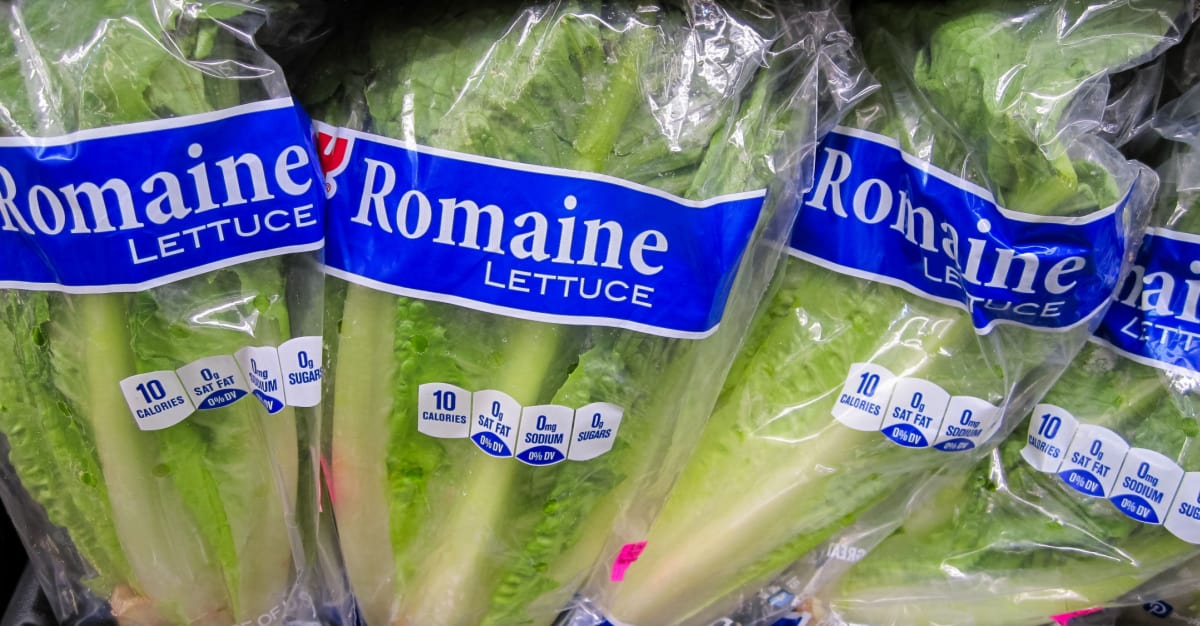Ever wondered about the journey of your favorite crispy greens from the soil to your salad bowl?
Welcome to your one-stop guide to the wonderful world of lettuce harvesting!
Be it the crunchy head lettuce, the tender leaf lettuce or the all-rounder romaine—we've got the scoop on what sets them apart and the secret sauce to harvesting them to perfection.

But it doesn't stop there! We'll let you in on the nitty-gritty of manual harvesting skills—think hand picking and selective cutting like a pro.
For the tech-savvy farmers, we'll delve into machinery-aided harvesting, from user-friendly walk-behind tools to majestic tractor-mounted giants.
Worried about keeping your harvest fresh as a daisy? Don't fret—we've got your back.
You'll walk away with handy tips and tricks for top-notch post-harvest care and storage to keep your lettuce leafy, lush, and luscious.
Your journey to becoming a lettuce connoisseur starts now. Let's romaine calm and crunch on!
Understanding Lettuce Harvesting
When it comes to lettuce harvesting, it's essential to know the different types of lettuce and the growth stages to ensure that you get the best quality produce.
In this section, we'll explore the types of lettuce, their growth stages, and how to harvest them effectively.
Types of Lettuce
There are several types of lettuce that you might grow in your garden, and knowing their differences will help you know when and how to harvest them.
These types include:
Head Lettuce (Crisp, Iceberg)

Head lettuce, also known as iceberg lettuce, is the most widely grown salad vegetable in the United States.
With per-capita consumption exceeding 25 pounds annually, it is a staple in many American diets.
Head lettuce is known for its crisp texture and mild flavor, making it a popular choice for salads, sandwiches, and other dishes.
In North Carolina, head lettuce can be grown as both a spring and fall crop in the eastern part of the state.
The climate and soil conditions in this region are ideal for growing head lettuce, and many farmers take advantage of this by planting head lettuce in the early spring and late fall.
It can be grown as both a spring and fall crop in eastern North Carolina and even during midsummer in western North Carolina at elevations higher than 3,000 feet.
Leaf Lettuce

Leaf lettuce is a type of lettuce that is known for its delicate flavor, loose, open heads, and tender leaves.
This variety of lettuce is popular in salads and is often used as a base for other greens.
When harvesting leaf lettuce, it's important to note that the outer leaves can be harvested one by one while the inner leaves continue to develop.
This method of harvesting allows for a continuous supply of fresh lettuce throughout the growing season.
Romaine (Cos) Lettuce

Romaine (Cos) lettuce is another popular type of lettuce that has a longer, more upright growth pattern and slightly thicker leaves.
This variety is known for its crisp texture and slightly bitter taste. Romaine lettuce is more tolerant of heat than other types of lettuce, making it a great choice for warmer climates.
This type of lettuce can be harvested in a similar way to leaf lettuce—by removing the outer leaves for a continuous harvest or by harvesting the entire head when it reaches the desired size.
Whether you prefer the delicate flavor of leaf lettuce or the crisp texture of romaine lettuce, understanding the different types of lettuce and their unique characteristics is essential for successful harvesting.
Growth Stages
Understanding the growth stages of lettuce is essential for successful harvesting.
Lettuce is best when it grows rapidly and matures before the heat of summer.
Head lettuce should be harvested when the heads have reached their desired size and firmness.
Press the top of the lettuce gently—if it feels firm and resists pressure, it's ready to harvest.
Leaf lettuce can be harvested one of two ways:
- Cut the outer leaves individually when they're large enough to use, allowing the inner leaves to continue developing.
- For "baby" lettuce, cut all of the leaves a few inches above the soil, being careful not to cut the growing point. This process can be repeated one to three times before the lettuce bolts, or starts to flower and produce seeds.
Romaine lettuce can be harvested similarly to leaf lettuce by removing the outer leaves for a continuous harvest, or by harvesting the entire head when it reaches the desired size.
Now that you're familiar with the types of lettuce and their growth stages, it's time to start growing and harvesting your own!
Remember to always use a gentle touch and harvest at the optimal times to ensure the best quality and taste.
Manual Harvesting Techniques

Hand-Picking
Hand-picking is a simple, yet efficient method for harvesting lettuce at home or in small-scale gardens.
You'll want to wear gloves to protect your hands from any rough edges on the lettuce leaves.
To start the process, you'll identify the largest and most mature leaves on the outer layer of the plant.
Gently grasp the leaf, and with a slight twisting motion, remove it from the main stem.
This method allows the inner leaves to continue growing, providing a continuous supply of fresh lettuce
Remember to handle the leaves carefully to avoid bruising or tearing them.
Selective Cutting
Selective cutting is an excellent technique for harvesting loose-leaf lettuce varieties in a more organized and efficient manner.
To perform this method, you'll need a clean, sharp pair of gardening scissors or shears.
Begin by identifying the mature leaves on the outside of the plant, which are typically larger and more flavorful.
Position your shears about 2-3 inches above the base of the leaf, and carefully cut the leaf from the plant.
This will ensure that you're leaving the growing point intact, allowing the plant to continue producing new leaves.
When using selective cutting, it's essential to:
- Harvest early in the morning when lettuce leaves are at their freshest and crispest.
- Clean your scissors or shears before and after harvesting to prevent any potential spread of disease.
- Be mindful not to damage the growing point of the lettuce plant, as it is responsible for the new leaf production.
By utilizing these manual harvesting techniques, you can enjoy fresh, homegrown lettuce throughout the growing season.
This video below shows you 3 ways to harvest lettuce.
Machinery-Assisted Harvesting
There are several ways to harvest lettuce using machines. Let's talk about the techniques in this section.
Walk-Behind Harvesters
When it comes to harvesting lettuce, walk-behind harvesters are a popular choice for smaller-scale farms and gardens.
These machines allow you to easily cut your lettuce plants by hand while walking behind the harvester.
See the machine in this video below.
They often have adjustable cutting heights and speeds, so you can tailor your harvesting process to the specific needs of your lettuce crop.
Here are some key benefits of using walk-behind harvesters:
- Ease of use: These machines are usually simple to operate, allowing even novice farmers to perform efficient, precise harvesting.
- Maneuverability: With a compact design, walk-behind harvesters can easily navigate narrow rows and tight spaces in your garden or field.
- Cost-effective: Compared to larger tractor-mounted options, walk-behind harvesters typically have a lower upfront investment and maintenance costs.
Tractor-Mounted Harvesters
For larger-scale lettuce production, tractor-mounted harvesters are an efficient way to complete the process.
These harvesters are attached to a tractor and can cover more ground quickly, saving you time and labor.
See the video below to see how it's done.
Some advantages of using tractor-mounted harvesters include:
- Higher capacity: Tractor-mounted harvesters can handle larger volumes of lettuce, making it ideal for commercial operations.
- Faster harvesting: These machines cover more ground in less time, allowing you to harvest your crop more quickly to optimize freshness and nutritional value.
- Less labor-intensive: With a tractor-mounted harvester, much of the harvesting process is automated, reducing the need for manual labor.
Both walk-behind and tractor-mounted harvesters offer advantages that can help improve your lettuce harvesting process.
Assess your operation size, budget, and specific needs to determine which type of machinery is best for you.
Post-Harvest Handling and Storage
After harvesting your lettuce, it's essential to follow proper post-harvest handling and storage procedures to maintain its quality and freshness.

In this section, we'll discuss pre-cooling procedures, packing, and shipping.
Pre-Cooling Procedures
Pre-cooling is important to remove field heat and slow down the respiration process of the lettuce.
Slowing respiration helps delay postharvest growth and maintain freshness.
A common pre-cooling method for lettuce is hydrocooling, which involves immersing the produce in cold water or placing it under a cold-water shower.
You can also use forced-air cooling systems, where you pass cold air over the lettuce to remove the field heat.
Aim to cool the lettuce to a temperature of around 32°F as soon as possible after harvesting to maintain its quality.
Packing
Once your lettuce is sufficiently cooled, it's time to pack it for storage and transportation.
Use clean, well-ventilated containers or crates to ensure proper airflow around the lettuce.
To avoid crushing or damaging the leaves, do not stack the lettuce too high in the containers.
Make sure to use food-grade materials for packing and avoid reusing contaminated materials to prevent the growth of any harmful microorganisms.
Shipping
When shipping your lettuce, maintain the cold chain throughout transportation.
Keep the temperature at a steady 32°F with a relative humidity of 90-95% to ensure optimum freshness.
Consider using refrigerated trucks or insulated shipping containers to control temperature and humidity levels during transport.
Additionally, minimize the time between harvest and distribution to guarantee the best quality.
How Does Commercial Lettuce Harvesting Work?
In commercial lettuce harvesting, specialized machines are usually used.
A machine cuts the lettuce heads at the base and collects them into bins or onto conveyor belts.
The heads are then sorted, cleaned, packaged, and transported for sale.
Can You Harvest Lettuce Without Killing The Plant?
Yes, it is possible to harvest lettuce without killing the plant.
For leaf lettuce, simply pick the outer leaves, allowing the inner leaves to continue growing.
For other types like romaine, you can cut the top two-thirds of the plant and leave the lower third to regrow.
Remember that it may take some time for the lettuce to regrow, and its quality might decline after multiple harvests.
Maximize Your Lettuce Harvest
Harvesting lettuce is a relatively simple process that can be done efficiently with proper planning and timing.
Keep in mind the importance of harvesting them during the coolest part of the day to maximize their freshness and quality.
It's essential to carefully observe your lettuce plants, as the right time to harvest depends on their specific variety and the conditions in your area.
By following these guidelines for harvesting lettuce, you'll be able to enjoy the fruits of your labor and appreciate the fresh and healthy salads you create with your homegrown greens.
For more tips, check out these other articles:
Will Lettuce Regrow After Cutting? Find Out Today!
Can Lettuce Survive A Freeze? [And How To Prevent It From Dying]
